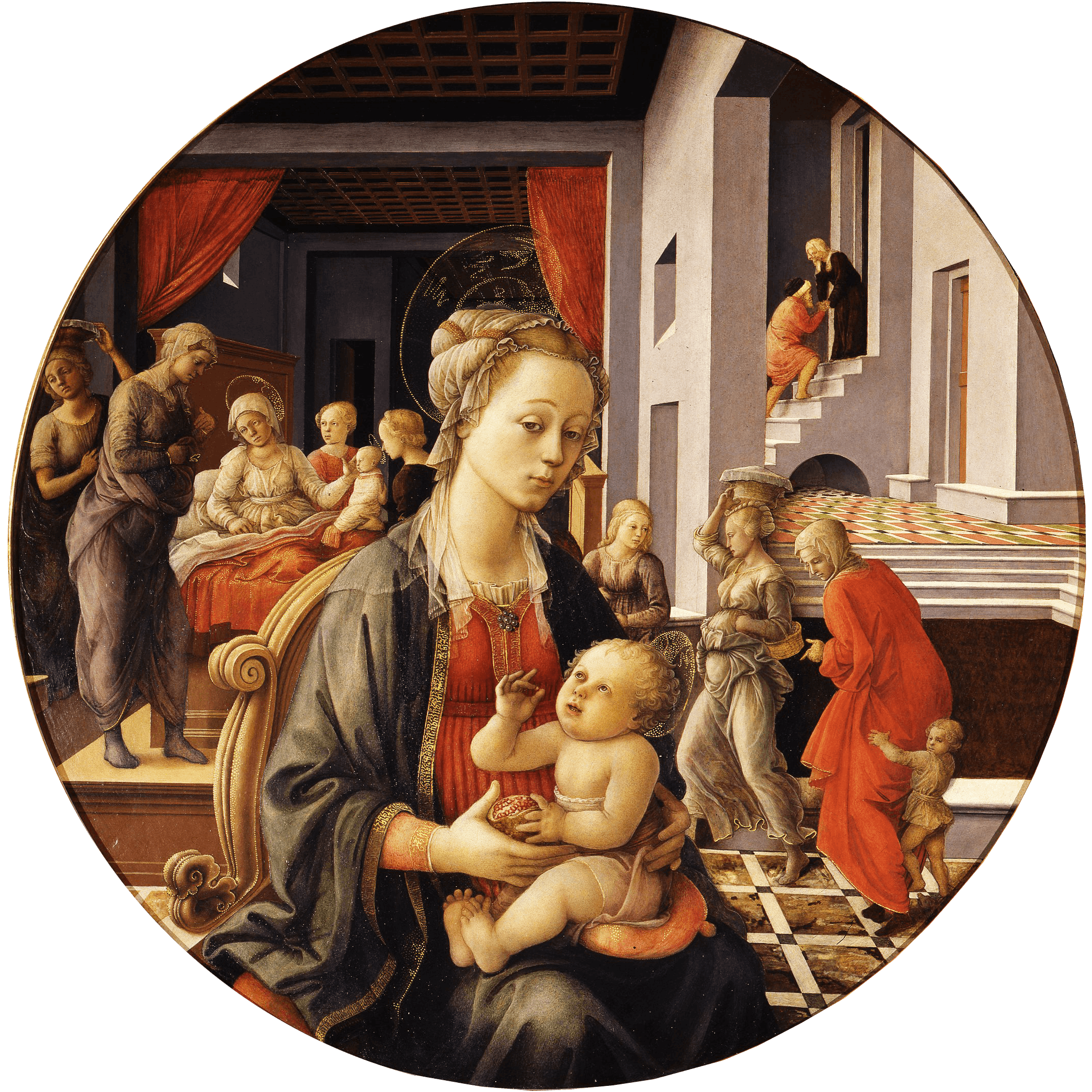Madonna with the Child and Scenes from the Life of St Anne
Filippo Lippi (Firenze 1406 ca. – Spoleto 1469)
This painting, one of the most original works on a holy theme from the early Renaissance, shows the Virgin Mary in the foreground. The Virgin is seated on the throne with the Child on her knees, in the act of removing seeds from a pomegranate that she holds out to him, a symbol of fertility and a premonition of the Passion. Behind the traditional Virgin and Child group, inside a palace are depictions of two episodes of the life of St Anne, Mary’s mother. On the right side, Anne’s meeting with her husband, Joachim, is depicted on a staircase. On the left side, the birth of the Virgin is shown, with Anne in a bed, surrounded by women to look after her and the newborn, as well as bring gifts. This is a truthful portrayal of daily life for women in the wealthier classes of the 15th century. The different sizes of the figures (with Joachim and Mary being the smallest in the episode showing their meeting, middle-sized for the persons present at the birth of Mary and largest in the depiction of Mary and the Child in the foreground) measure as well as the spatial depth, the temporal distance between the three moments. Filippo Lippi is able to harmonise the single parts of the story, narrated with extraordinary synthesis and unified by the architectural structure with its Renaissance flavour. There is a tendency to place this piece in relation to some documents from 1452-1453, where Filippo Lippi is appointed to paint a tondo work for Leonardo Bartolini Salimbeni (1404-1479), likely destined to his residence. Indeed, the circular shape was often used for holy paintings to be hung in the home during the 15th century, in addition to the fact that the subjects depicted are quite fit for a family environment. On the back of the painting is an outline of an emblem that shows a gryphon, which had not yet been identified.
